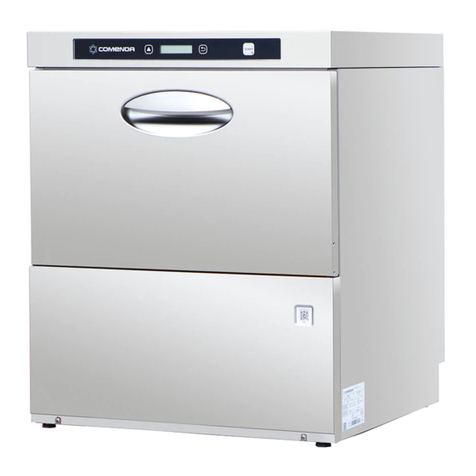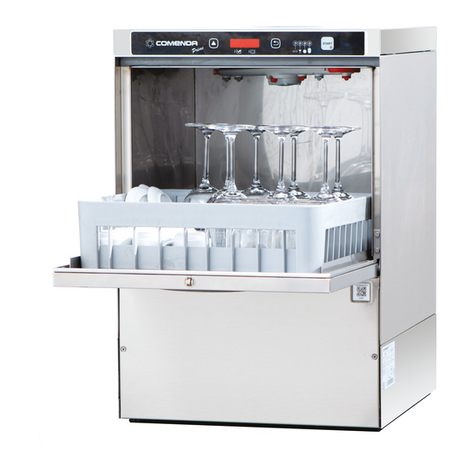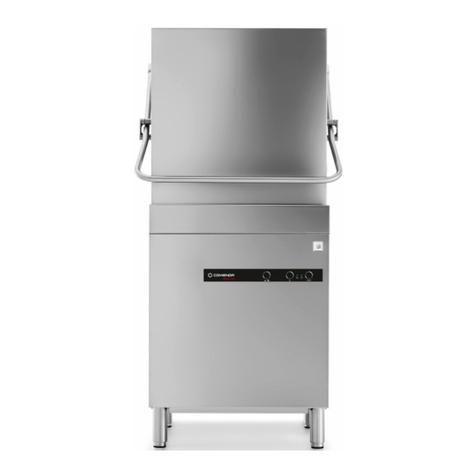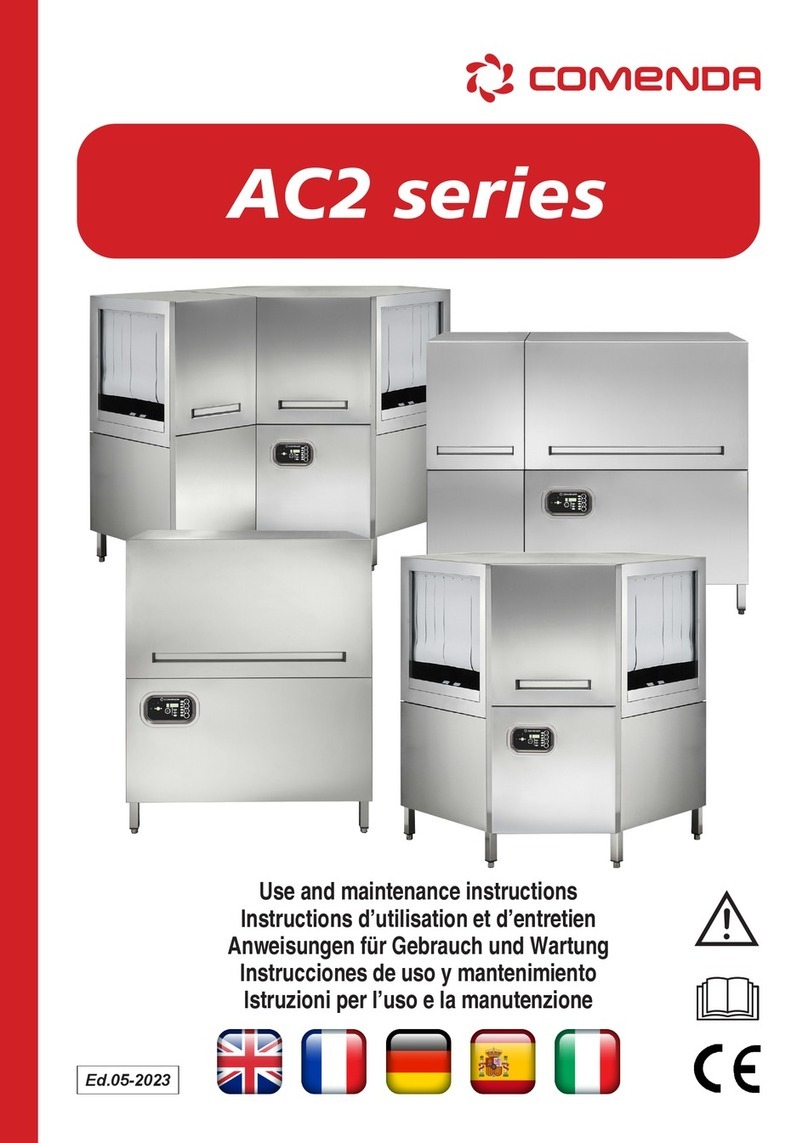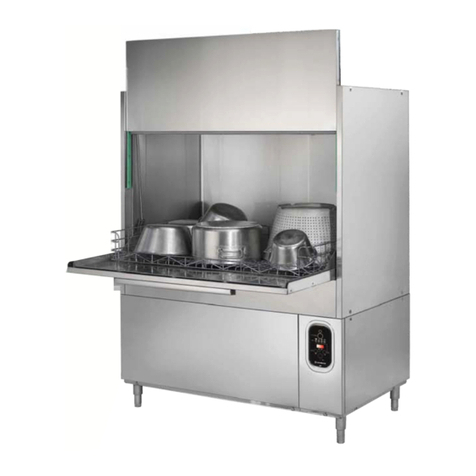
INSTRUCTIONS FOR THE USER
44
OPERATION AND USE
1. Before washing make sure that:
• the wall-mounted on/off switch is switched on;
• the water tap is open;
• water is present in the distribution network;
• the pump protection filters are installed in their respective positions;
• the overflow in inserted;
• all rotating parts are free;
• the rinse aid dispenser is full;
• make sure that dishware is in good conditions as it may cause cleaning
difficulty and haven bacteria.
2. Press the "Q1" button (RED) to enable the automatic wash tank filling and
the consequent triggering of the heating element.
3. As soon as visual indicator "H2" is ON; pour about 30 gr. of detergent
directly into the tank, paying attention to distribute it uniformly on the filters,
the quantity being according to supplier's instructions. Add 15 gr. every 7
cycles to achieve a concentration of 1,5 gr./lt. In order to respect our
environment, use only the correct amount of detergent.
When using chlorinated detergent, it is suggested to use an automatic
dispenser; otherwise, brownish spots might appear on the surfaces due to
chlorine reactions. Detergent should always be placed near the pump filter.
4. Then, introduce the glasses or the cups to wash, after having removed the
solid waste and having placed them into the proper racks. The cups and the
glasses should be turned upside down, while the cutlery should be put
vertically into the proper container, and the same applies to dishware.
5. Press the "S9a" button to select the wash cycle according to conditions of
the dishware:
• (pos. 1 ) short cycle with normally dirty dishes;
• (pos. 2 ) long cycle with particularly dirty dishes or deep dishes
A manual wash is possible by pressing the "S9" button activates the wash
cycle for a maximum time of 8 min and 20sec. To interrupt the wash cycle
press "S9". The pause and rinse cycles will follow and if incorporated also
the drain cycle.
6. Close the door for the wash cycle start.
The end of which will be indicated by the switching off of the "H3" lamp.

